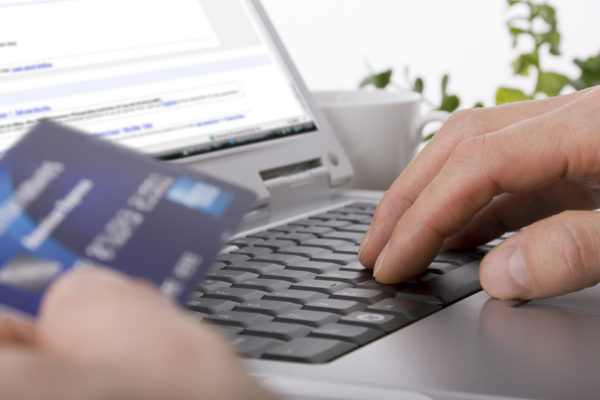Money Smart
(ASIC)
Mistakes on your bank account
If there is an error on your bank account or credit card, the sooner you report it to the bank, the more likely it is you’ll get your money back.
Here we explain what to do if you make a mistake transferring money from your bank account or if you are worried someone else is using your account without your consent.
How do unauthorised or mistaken bank transactions happen?
An unauthorised transaction is when funds are transferred from your account without your knowledge or consent, by someone else who has access to your account.
A mistaken transaction occurs when you pay the wrong person or company by:
- incorrectly typing the BSB or account number
- putting in the wrong information because the person you are paying has provided the wrong number
- selecting the wrong payee.
ASIC figures from a 3-month period in 2015 showed that 83% of mistaken transactions were because people incorrectly entered the bank account details of the person they were transferring money to.
How does the ePayments Code protect you?
The ePayments Code is a code of practice that most banks, building societies, credit unions and some payment services have signed up to. It protects you when you’re making electronic payments, including when you:
- withdraw money from an ATM
- buy goods or services using EFTPOS or credit card (although not when you authorise the purchase with a manual signature)
- use telephone or internet banking
- pay with your credit card over the phone or internet
- use mobile phone payment services.
You can find out more about the ePayments Code on the ASIC website.
Video: Top tips for checking your bank statement
Financial counsellor Kristen Hartnett gives her tops tips on checking spending, income and fees on your bank statement. Kristen has many years’ experience helping people deal with their money problems.
You can find a financial counsellor near you on our financial counsellor map.
Can you get your money back if there’s a mistake on your bank account?
In most cases, you are entitled to a refund if there is an unauthorised or mistaken transaction on your account. However, there are some instances where you may not be able to get your money back.
Getting your money back after a mistaken payment
If you put in the wrong BSB or account number, or chose the wrong payee, you are likely to get your money back if you contact your account institution within 10 business days and the money is still in the recipient’s account. Both your and the recipient’s account institution will need to be satisfied that the mistake is genuine.
It will be a slower process if you report the problem after 10 business days, but you should still get your money back if the money is still in the recipient’s account.
If it is more than 7 months, and the money is still in the recipient’s account, then the recipient has to consent to the return of your funds before you can get your money back.
Getting your money back after an unauthorised transaction
You are likely to get your money back if:
- a forged, expired, faulty or cancelled PIN/password or card was used
- the transaction was fraudulently made by an employee of your financial institution or merchant
- the transaction took place before you received your card, PIN or password
- a merchant incorrectly debited your account more than once
- the transaction occurred after you told your financial institution that your card was lost or stolen, or that someone else may know your PIN or password
- it’s clear that you haven’t contributed to the loss.
When you may not get your money back after an unauthorised transaction
There is less chance of getting your money back from an unauthorised transaction if you:
- acted fraudulently
- didn’t keep your PIN or password secret
- unreasonably delayed telling your financial institution that your card was lost or stolen or that someone else may know your PIN or password
- accidentally left your card in an ATM.
However, even in these circumstances, the amount you are liable for is subject to certain caps.
Unauthorised credit card transactions
Unauthorised credit card transactions are most likely to occur where the card is not present, for example when it is used to make phone or internet purchases, or where a merchant has charged you more than once in error.
You will need to report the unauthorised transaction as soon as you become aware of it. If your credit provider has signed up to the ePayments Code, they must investigate the unauthorised transaction, even if it falls outside the time period permitted under the Visa and MasterCard scheme chargeback protections.
See ASIC’s media release on Citibank refunds to customers when they were misled about their rights around unauthorised transactions.
How to report a mistake on your bank account or credit card
Before you report an unauthorised or mistaken transaction, check if your bank, credit union, building society or payment service provider has signed up to the ePayments Code. You can check on this ePayments Code subscribers’ list.
Smart tip
When you report a mistake or unauthorised transaction on your account make sure you get a reference number to verify that you made the report.
If they subscribe to the Code, they must have processes in place to return your money, in the circumstances outlined above. If they are not a subscriber, you can still raise your concerns with them. You can also ask them to sign up to the Code.
To report a mistake or unauthorised transaction on your account, call your financial institution as soon as possible and let them know.
In the case of an unauthorised transaction, you need to do this quickly to fix up the problem and prevent any more unauthorised transactions.
It is worth closely checking your account statements every month for any wrong transactions and reporting them to your service provider as soon as possible.





